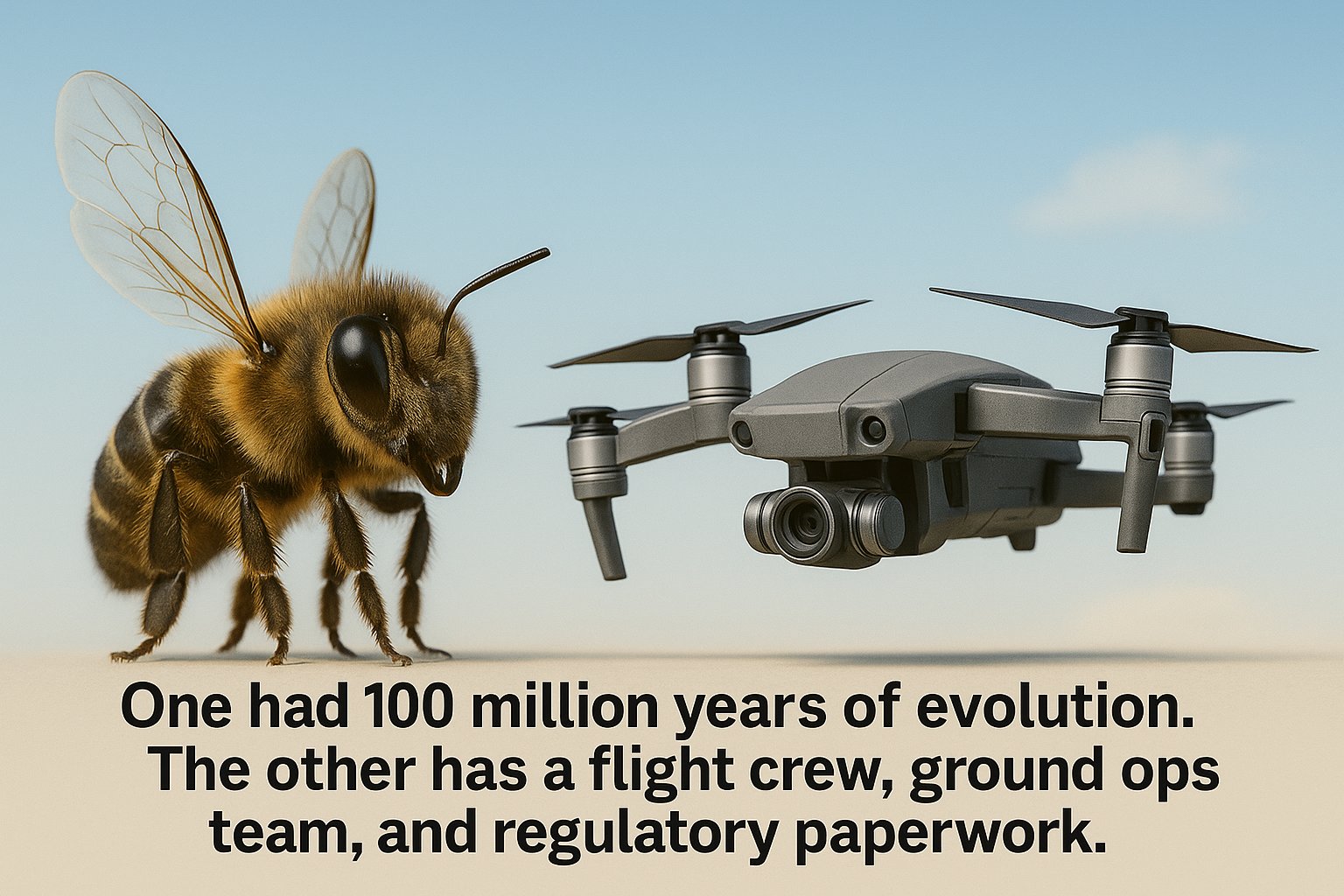
Part II Of A LinkedIn Series By Mike Richards
Based on Drone America’s 16 years of real-world experience in the UAS industry
Just because some small UAS may resemble consumer drones or recreational toys doesn’t mean they should be treated as such.
The word “drone” originates from the male honeybee a creature known more for buzzing than intelligence. That legacy has shaped a public perception that oversimplifies what unmanned aircraft systems really are: sophisticated, high-performance aerospace platforms.
Today’s commercial, government, and military drones often cost as much as or more than a family SUV or even a small, manned aircraft. But the true measure of value extends far beyond the price tag.
Value isn’t just built into the aircraft it’s created throughout the process.
Value should be defined not only by the cost of the system, but by the effectiveness of the solution it delivers. A well-designed UAS must solve the right problem reliably, efficiently, and safely in the hands of the end user. But value also comes from the people and communities behind it. Each aircraft represents skilled work across design, development, production, and testing creating meaningful jobs and fostering hands-on innovation that inspires future generations.
Its impact extends outward to local suppliers, educators, service providers, and families whose lives are shaped by the growth of a responsible, mission-driven industry.
Looks can deceive and shortcuts cost lives. A drone’s appearance says nothing about the energy it carries or the risks it poses. Reliability doesn’t come from how it looks; it comes from disciplined engineering, rigorous testing, and readiness for the unexpected.
Up Next: Live Testing Is Non-Negotiable
